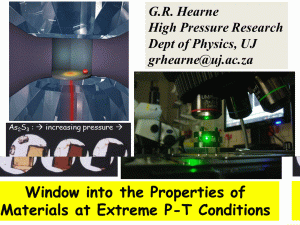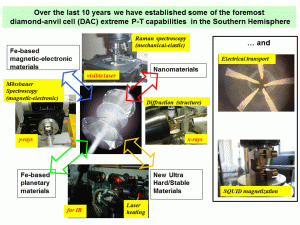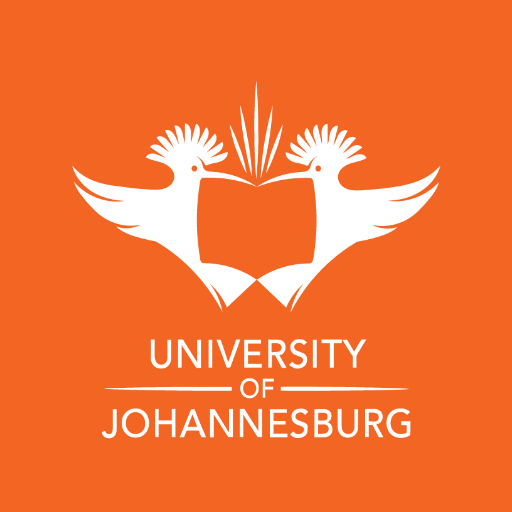Materials Physics at Extreme Conditions
Home » Faculties of Science » Departments » Physics » Research » Condensed Matter »We operate various versatile miniature diamond anvil cells (DACs) for the in situ characterisation of materials under extreme pressure-temperature (P-T) conditions. Pressure is considered as a “clean and controlled” fine-tuning parameter of the physical properties of materials by progressively changing the inter-atomic spacing. These DACs, transparent to a wide range of probing radiation, also readily fit into cryostats, under microcopes, in furnaces and so on. We then exploit the availability of existing characterisation facilities like Raman spectrometers for investigating mechanical-elastic properties, 57Fe Mössbauer spectroscopy to probe magnetic-electronic properties, XRD for structural evolution, electrical-resistance for carrier transport properties, as a function of pressure in various materials comprised of mainly 3d transition metal compounds. These include (i) strongly correlated electron systems (SCES) like Mott insulators which actually have considerable overlap with the physics involved in deep Earth materials, (ii) pressure response of nano-materials as well as (iii) potentially new ultra-strong and stable materials.
We are able to use the above mentioned techniques on a routine basis to pressures of ~30 GPa ( = 300 kbar = 300000 atm) in the DAC. We can concurrently conduct temperature dependent studies to 3-4 K or to high temperatures exceeding a 1000 K in the laser-heated DAC. Where necessary pressures can be extended into the megabar (~100 GPa) regime corresponding to energy densities of 0.5 – 1.0 eV/Å3. Aside from these laboratory based capabilities we also have various contacts at synchrotrons for the application of synchrotron radiation specific techniques like X-ray absorption spectroscopy (XANES and EXAFS) and magnetic dichroism (XMCD) under such extreme P-T conditions.
We have international collaborations with Israeli and French groups and are now consolidating collaborations with Japanese and Brazilian colleagues.
Some of the current projects involve investigations on pressure :
- tuning the crystal field to effect spin crossover (e.g., in Fe based compounds ) and thus magnetic moment alteration;
- induced magnetic collapse in Mott antiferromagnetic-insulators and other SCES (e.g., transition metal compounds);
- instigated structural phase transformations and consequent magnetic-electronic properties of the stabilised high pressure phases (e.g., Fe-oxides);
- engineered potential new ultra-strong lightweight materials based on interlinking strong carbon nanotubes, as facilitated under cold compression alone or by a combination of ion-implantation, heating (laser-heated DAC) and compression.
Future projects and intentions include :
- megabar (100 GPa or more) studies corresponding to deep Earth conditions, by exploiting synchrotron based techniques;
- ascertaining the pressure response of new generation (e.g., Fe based) superconductors;
- implementing alternative magnetic characterisation (SQUID based) and electrical-transport (Hall effect) techniques under extreme high-pressure low-temperature conditions;
- establishing the role of pressure in mixed-valence multiferroic (ferroelectric/magnetic) related compounds (e.g., LuFe2O4 and Fe2BO4);
pressure induced charge and spin dynamics probed by femtosecond spectroscopy.
Links to related webpages
https://en.wikipedia.org/wiki/Diamond_anvil_cell
https://cdac.carnegiescience.edu/


